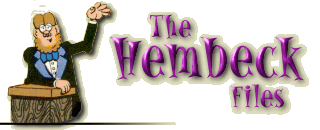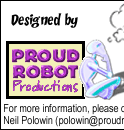
Let's review, shall we?
Young Billy Batson is hawking newspapers late at night on a street corner somewhere in the downtown section of an unnamed metropolitan city that obviously doesn't have any child labor laws. A mysterious stranger appears, beckoning Billy to follow him into an unused, and previously unnoticed, subway station. Without the slightest trace of an instinct for self-preservation, Billy follows the mysterious stranger onto a distinctly non-subway looking train, and is whisked away from life as he knows it.
Finding himself eventually in a large hall filled with icons representing the Seven Deadly Sins (Wrath, Envy, Sloth, Avarice, Lust, Pride, and, um, watching Who Wants To Be A Millionaire), Billy is confronted by the soon-to-be-discorporeal wizard Shazam. The wizard reveals that he has used his powers to battle the forces of evil for 3000 years, but has hit the mandatory retirement age and needs to find a successor. By speaking the wizard's name, Billy transforms into an alter ego - Captain Marvel - with magnificent powers inspired by Greek (or is it Roman?) mythology.
Thing is, the alter ego is an adult. Weird, huh? Big, grown-up body; young pre-adolescent mind.
Saying the wizard's name a second time transforms Captain Marvel back into Billy Batson, and also somehow triggers the release of a large block of granite suspended over Shazam's head.
Maybe it's just me, but wouldn't most kids be just a little traumatized at seeing an elderly man - especially one who has just granted them incredible powers - crushed to death this way? Nope! Billy just goes back to selling his papers! I guess that the name 'Shazam' doesn't have room for the letter 'C' for compassion.
On a historical note, Fawcett's supervising editor Bill Parker had originally intended Captain Marvel to be six different heroes, each with a different power: Solomon's wisdom, Hercules' strength, Atlas' stamina, Zeus' power, Achilles' courage, and Mercury's speed. It was only after conferring with other Fawcett honchos that the group of six was combined into a single hero, Captain Thunder.
Yep, that was his original name, as seen in the ashcan edition of Whiz Number 1. The name was changed to the more currently renowned Captain Marvel following an editorial meeting shortly thereafter. Apparently, it's something of a mystery as to why the name was changed, but that pales in comparison with the larger mystery of why artist C.C. Beck chose to model the Captain after My Three Sons patriarch Fred MacMurray.
All of this happened in 1939. Scarcely two years later, there were Marvels poppin' up all over. In a story in which Billy met three other Billy Batsons (Tall Billy from Texas, Fat Billy from Brooklyn, and Hill Billy from the South), they discovered they also gained super-powers when saying the magic word. The trio of stereotypes promptly dubbed themselves 'The Three Lieutenant Marvels' and has rarely been seen since.
Captain Marvel Junior debuted a few months later, in a story featuring a young boy crippled by the evil Captain Nazi. Captain Marvel Senior took the boy to the wizard Shazam, who enabled the boy to transform à la Billy simply by speaking his soon-to-be mentor's name, "Captain Marvel."
Think about this for a second. He can never introduce himself to anyone without transforming himself back to his Freddy Freeman alter ego. If he has any instinct for self-preservation, he has to turn into Miss Othmar whenever anyone asks him who he is.
Mary Marvel hit the scene a few months later, as Billy's long lost twin sister. You have to love this exchange from that story:
"Billy -- I'm your twin sister -- so maybe if I said the magic word, I'd change into something, too!"
"Naw! Old Shaz... er, you know who…wouldn't give his powers to a girl!!"
What an enlightened youngster, hey? Billy only manages to taste his loafers to a much greater extent later in the story, with the words:
"How could you say...the word...and be given the powers of Solomon, Hercules, Atlas, Zeus, Achilles, and Mercury? They're all men - and you're a girl!!"
Turns out that Mary's powers came from an equivalent pantheon of female mythological heroes - receiving grace, strength, skill, fleetness, beauty, and wisdom from, respectively, Selena, Hippolyta (hey - that's Wonder Woman's mom!), Ariadne, Zephyrus, Aurora, and Minerva. It's interesting that beauty is considered to be a super-power; or perhaps Fawcett's writers were just very aware of how superficial western culture could be.
So, all told, that's a total of six Marvelites
Plus the assorted hangers-on.
Uncle Marvel.
Freckles Marvel.
Hoppy Marvel
Don't ask.
- NP









